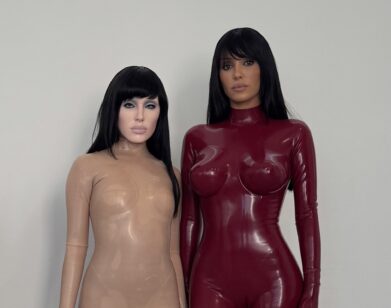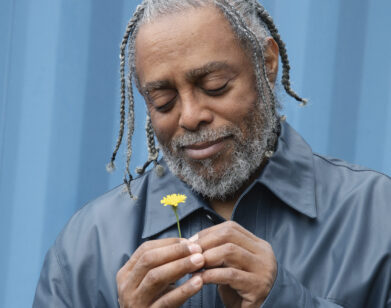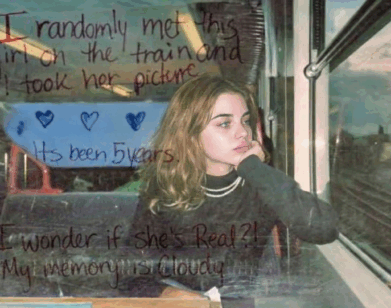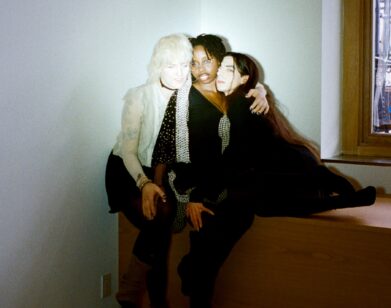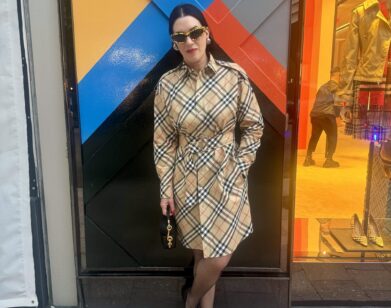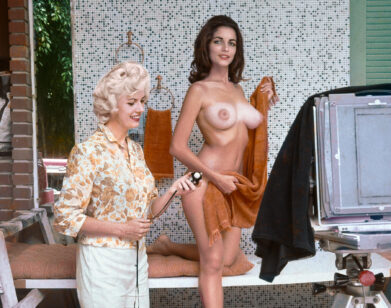Andy Warhol in Black and White
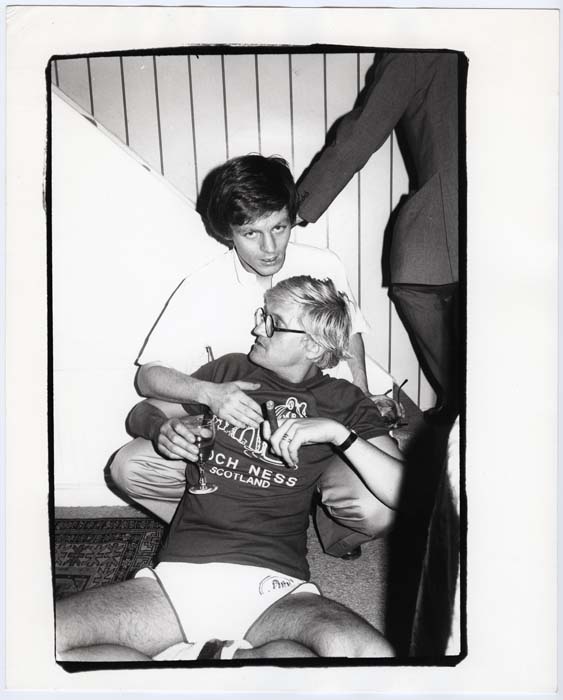
ANDY WARHOL AND VICTOR HUGO, 1978.
In the early ’70s, maybe around 1972, Andy Warhol began a now famous morning ritual. He’d wake up each weekday and record his thoughts and things that had happened to him in a diary. The diary took the form of a phone conversation, which was recorded on tape and transcribed five days a week by Pat Hackett, a writer and Andy’s dear gal Friday and someone who he’d probably talk to first thing every morning, anyway. After Andy died, Hackett cut and stitched the transcripts together into a 900-page bestseller called The Andy Warhol Diaries.
Hackett was always adept at channeling Warhol (she has the particular ability to imitate Andy’s inimitable speech patterns), and the book had a Warholian ethic. Andy liked to record things—everything, really—and he liked to make projects of books, more so than any major artist in recent memory. And he liked to combine those two enthusiasms. (Witness his clever and funny memoir, also written with Hackett, POPisms, and The Philosophy of Andy Warhol, and Andy Warhol’s Party Book, etc.) Something else Andy liked to do was go out and see people at night, whether it was at Studio 54 or Texarkana or the back room of Max’s Kansas City or across a table of ice-cream sundaes at Serendipity; whether it was Steve Rubell or Mick Jagger or Truman Capote. Of course he’d take a camera along with him—which, beginning in 1976, was a 35mm Minox 35EL, a beautiful, brand-new toy, the world’s smallest 35mm at the time, which Andy went out and bought as soon as he found out about it from the Zurich dealer Thomas Amman, according to Bob Colacello, Interview‘s editor during that period. Bob bought one, too, and the two of them started taking pictures of everything, including the contents of their hotel’s room-service carts.
When Andy and Bob published Andy Warhol’s Exposures in 1979, the publisher, Grosset & Dunlap, asked them to keep the room-service still lifes to minimum. They preferred movie stars to pictures of Factory regulars like Bianca Jagger or the photographer Christopher Makos, photogenic and naughty though they were. (Andy and Bob had originally wanted to call the book Social Disease, a title that was soundly rejected.) So they had to compromise on both title and content, leaving an entire cache of photographs out of the book. LEFT: DAVID HOCKNEY AND JIM ABBOTT, 1976–79.
About a year ago, Tim Hunt, a British curator and agent who handles prints and photographs at the Warhol Foundation, approached the New York gallerist Steven Kasher. “Tim and I were talking,” recalls Kasher. “He mentioned that there was this group of photographs that had been held together since 1979, and nobody had been able to tap into them. They were pictures Andy had chosen for Exposures, but they never made it into the book. We decided it would make a great show.” The exhibition of over 70 8″x10″ black-and-white prints taken between 1976–79, Unexposed Exposures, opens tonight, and the accompanying Steidl/Kasher book of the same title (with an illuminating foreword written by Colacello) is a natural extension of the project, in the best of Warholian traditions.
In his foreword, Colacello claims some of the pictures credited to Warhol in the original book as his. “Some of the pictures were Bob’s, yes,” affirms Kasher. “Even though they get mixed up at times. I’ve been able to distinguish the two styles over time. Andy’s approach is a little more neutral.” As in his persona, Andy’s photography was never without mischief. There’s a particularly revealing photo of Susan Sontag making eyes at Gloria Vanderbilt across a dinner table, and one of Steve Rubell urinating towards the camera (a different sort of revealing); there’s also Diana Ross, Jerry Hall, Bianca, Mick (with Catherine Deneuve), Yves St. Laurent, Victor Hugo, David Hockney in short-shorts, Capote and Polanski and Burroughs. Plus many more, including magnates of media (Barry Diller) and cookies (Famous Amos, with friends). Then there’s the still lifes held back from the original book.
“One of the things you realize looking at these pictures is Andy’s immense curiosity,” says Kasher. “He just wanted to see what everything was and what it looked like: what people were doing and what they looked like doing it, what boots looked like lying in the closet, what his dogs looked like. It was very diaristic. There really were a lot of dog pictures.”
ANDY WARHOL: UNEXPOSED EXPOSURES, OPENS TONIGHT, 6–8 PM. STEVEN KASHER GALLERY IS LOCATED AT 521 WEST 23 STREET, NEW YORK.
ALL IMAGES COPYRIGHT THE ANDY WARHOL FOUNDATION FOR THE VISUAL ARTS, INC. COURTESY STEVEN KASHER GALLERY

